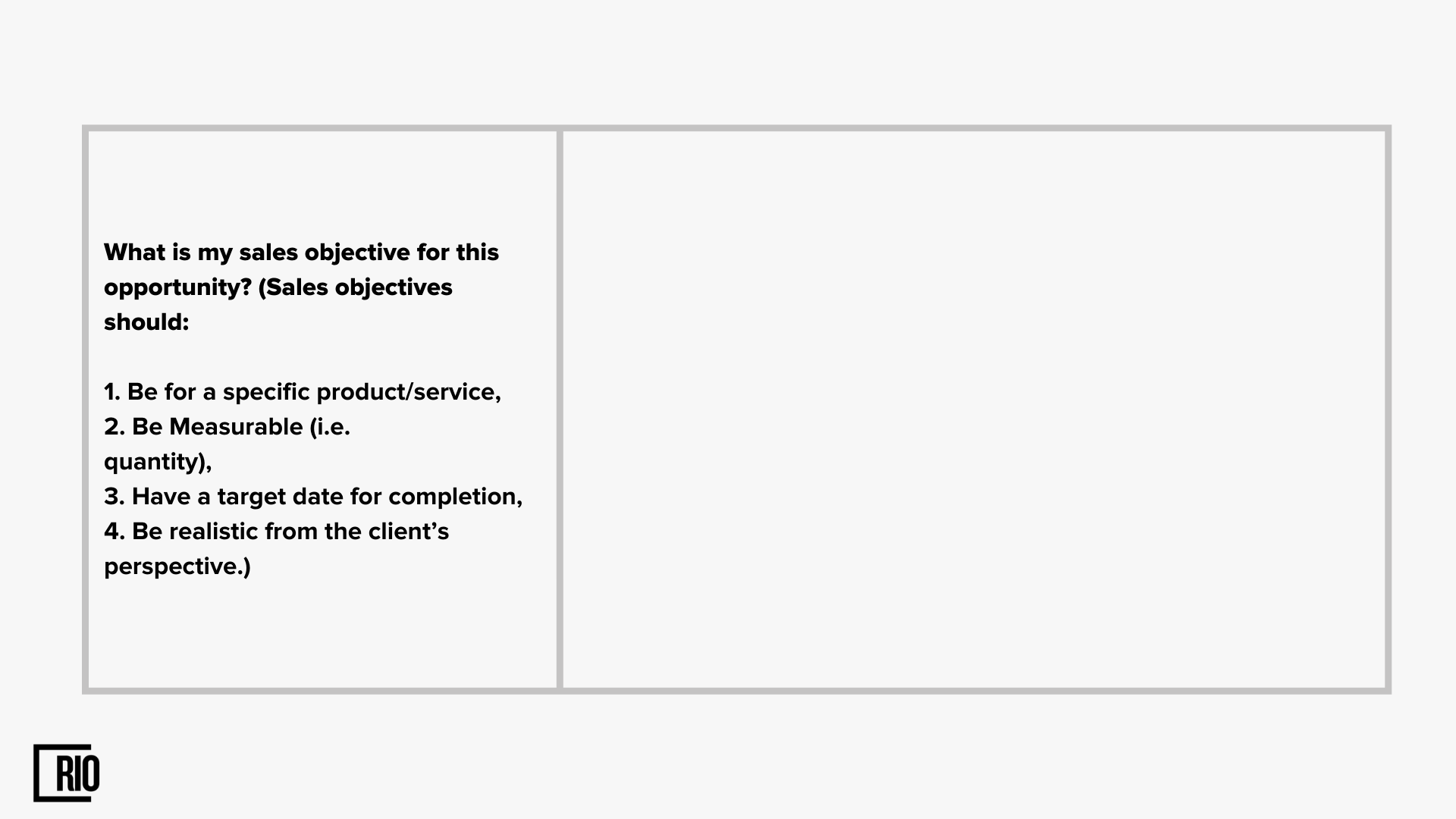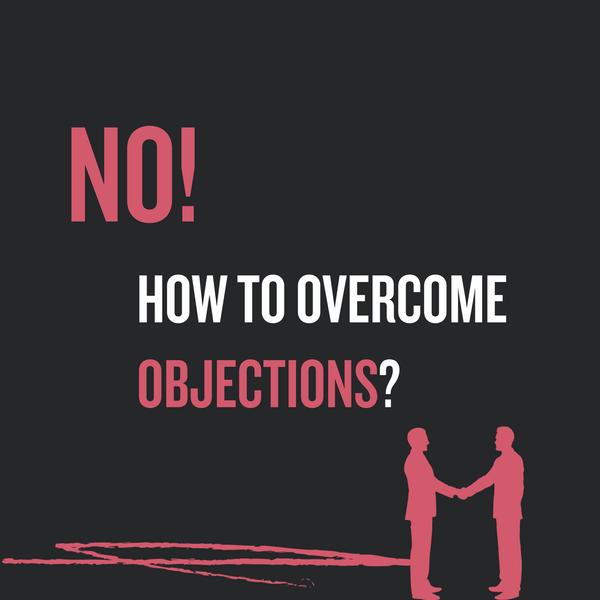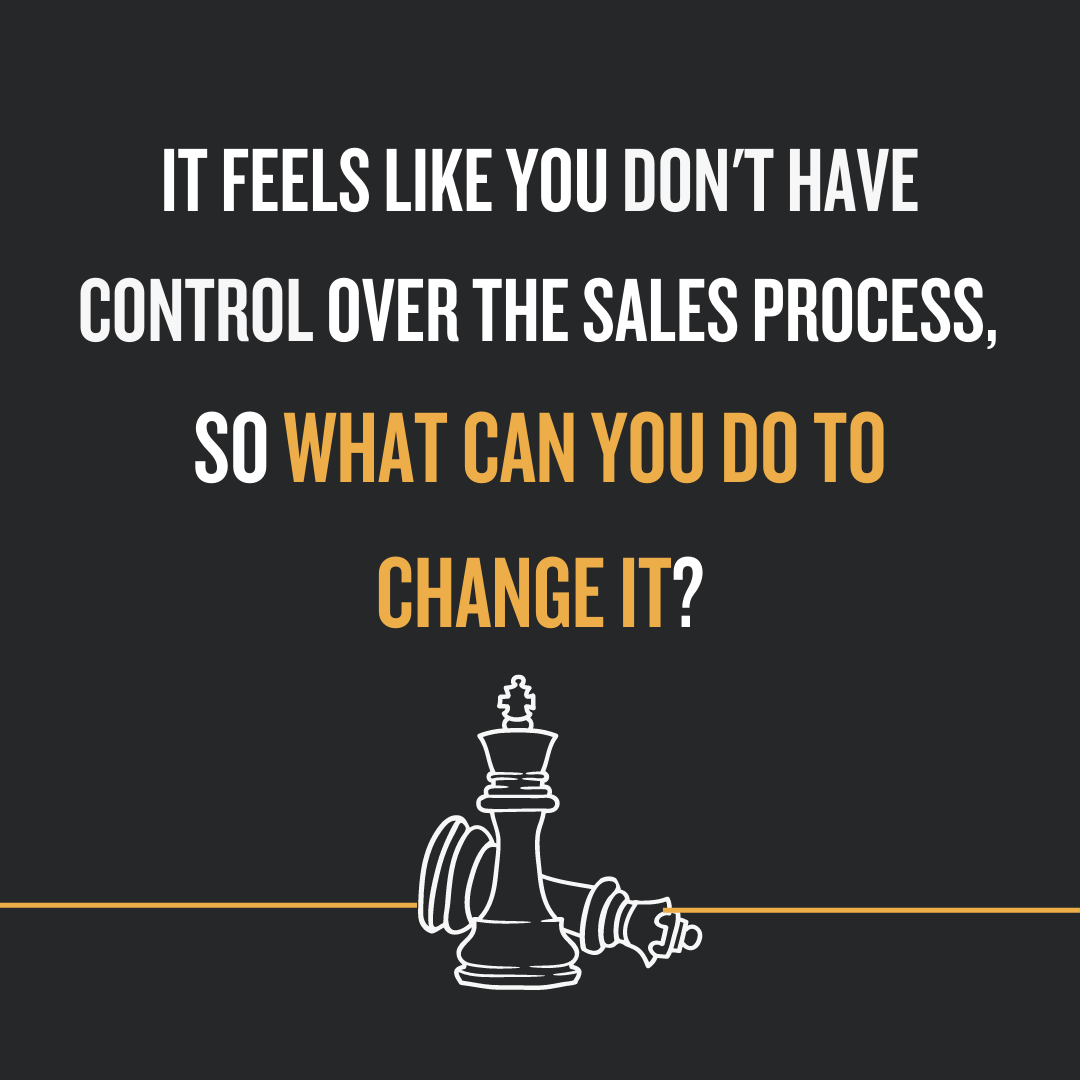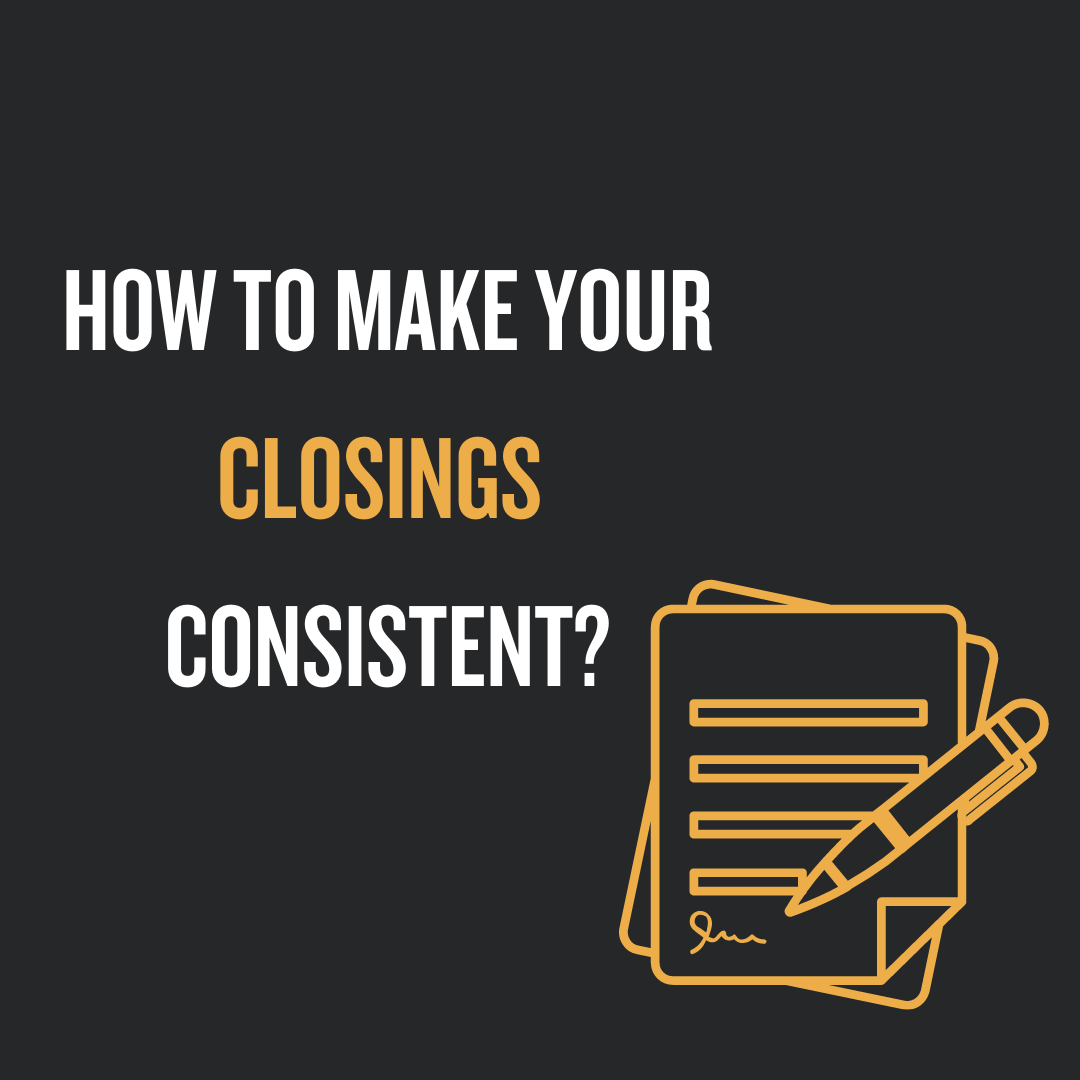Salespeople are always ready to face challenges, that’s what we do for a living. But challenges themselves can range from interesting to absolutely annoying.
And one of the most annoying problems that we often face is that our prospect is moving but not closing.
Everything seems fine, your prospect is ready to meet you again and again but it doesn't bring any visible result and just transforms into months of a never-ending cycle.
Well, If you’ve ever faced this challenge and still can’t figure out how to hack this problem then this article is for you.
Here I will give you some major rules that will help you get an idea of what might be wrong with your process and, in turn, will help you to solve it.
So, let’s not waste our time and solve this problem together!
Worksheets are available to download later below.
If you want to be successful in sales, it is important to plan and one of the most important aspects of planning is to have the right objectives in mind.
So the problem here is that although research shows that having a plan correlates with sales success, many salespeople do not set realistic goals for themselves for each sale. And that’s how we start this article:
RULE #1: Understand what objectives really mean.
The main idea of planning and goal setting is to be clear about what you want. When you have clarity, then you can take steps to achieve those goals. This includes being clear in both your conscious and unconscious mind.
And right here it's time to say that "closing the deal" - isn't good enough of an objective.
Because it's very hard to close a sale during the first conversation in most cases. So, it's much more realistic to close the sale on the last call. That is why it is important to know the difference between your overall sales objective and your individual call objectives.
You need to know what you want to accomplish with your sale (the overall sales objective) and what you want to accomplish on this particular call (the call objective).
Setting specific goals for each opportunity and each individual interaction will create a successful chain of advances that will ultimately lead to closing the sale and getting the deal.
What’s the crucial Difference Between Sales Objectives & Call Objectives?
- Sales Objective - the revenue (or outcome) you anticipate generating by closing this particular sales encounter.
- Call Objective - an advance or commitment that is the desired outcome of this particular sales encounter with this particular person or group.
There is a contrast between your ultimate goal in selling this specific opportunity and your goals for each individual sales call. The more clear these are for you, the more quickly you will reach your desired outcome.
RULE #2. Set realistic sales objectives.
People can often be confused about what they want and what they should do next.
Usually, when you meet with a potential customer, you have a goal in mind. This goal could be something that happens six months from now or it could happen during the next meeting. If you don't have a goal for the meeting, then there's no good reason for you to be there. Time is a valuable resource for everyone, so don't waste it by not having a plan.
Let's roll back here and state the attributes of the well-defined sales objectives:
1.It is related to a specific product or service.
2.It is specific and measurable.
3.It has a specific target date for completion.
4.It should be realistic from the client’s perspective.

Here is an important note, though: If you offer more than one product or service, then your sales objective should state how many products or services you want to sell.
To help you set realistic sales objectives you can create deadlines. Have a target date for completion and make sure all of your goals are realistic from the prospect's point of view.
You need to set this time frame in which you think this sales objective can be accomplished. And when setting this deadline, it's important to consider what the client is currently dealing with and make sure the timeframe is realistic for them.
So for every single sales objective, you should be able to answer the following:
- The client I am engaging is...
- The product/service I am trying to sell is...
- The amount of the product/service I am trying to sell is...
- The date for this to be completed is...
When you create a sales objective for each opportunity, you will be more clear about what you want to achieve, and when your objectives meet all important criteria (specific product, measurable, target date, and realistic), your sales forecast will be more accurate.
Bonus Tip: To create a realistic sales objective, you need to find out some things about your prospective client. This includes learning about their needs so you can figure out what products or services to offer them. If you haven't had the opportunity to do a lot of discovery or haven't talked to your prospective client yet, then:
1. Do what research you can and
2. Make discovery the main focus of your next meeting.
It's like a prescription without first diagnosing the problem - basically, malpractice. Once you have met with the client and determined the scope of their need, you can craft your sales objective.
So, to conclude this part of the article I want to state this:
Most professionals realize that they only have one or two of the four elements of a well-defined sales objective. This means that their objectives are not specific or measurable, which can make it difficult to achieve them.
Having a well-defined sales objective for each opportunity you encounter will make each interaction more effective. Take the time to create clear objectives for each opportunity you are working on so that you can be as successful as possible.
RULE #3: Always differentiate between Advance, Continuation, and Close.
There are three concepts you need to know about selling: closing, advancing, and continuation.
- Closing is when someone agrees to buy your product.
- Advancing - a significant action that requires energy from the client - either during the call or right after it.
- Continuation - the situation where the sales process will continue yet no specific action has been agreed upon by the customer to move forward.
It's very important to understand the difference between these three concepts because not knowing can cause your sales to drag on and on in a never-ending state of non-closure.
To illustrate the significant difference and true definitions of these three concepts I'll show you a perfect example written in the book "The Perfect Close: The Secret To Closing Sales" by James M Muir.
One of Muir's reps was absolutely convinced that he had a fantastic possibility on the line. The trouble was that a sales journey should have only taken a few months but was going on for much longer than that and still with no result.
Muir started digging into what was going on during each contact and visit with the potential client. As a result, some interesting patterns emerged.
Muir asked the rep several questions about conversations he had with the prospect and received these answers:
- From an early contact, “They mentioned they know client XYZ and really respect them. I sent them literature.”
- At an on-site visit, “I gathered a lot of great information.”
- During an early encounter, “It was great. I did a demonstration, and they said they were really impressed.”
- On a phone call, “They asked me to come to the office next time I was in the area.”
- Upon visiting, “They acknowledged that we have some really great stuff, and I offered them a sample project plan.”
- Yet another contact, “We did a second demo over the web.”
- A visit, “We had lunch and really strengthened our relationship.”
- “She thought it might make sense to see another demo.”
- On another visit, “I visited and collected some really useful information.”
- And yet another call, “I asked them if they wanted a proposal and cost estimate, and they agreed.”
Unfortunately, these positive responses are not what we need and they barely signify the prospect's engagement. The rep has performed a large number of tasks while the prospect hasn't put any energy into it.
Now, let me explain why.
As Muir stated none of those answers were advances. Instead, all of them were continuations. Remember, I put this story here to show you the particular difference between three concepts: closing, advancing, and continuation.
So, an advance is something the client does that gets the sale moving closer to a decision. This can be something the client does during or right after the call or a meeting.
The thing is, Muir's representative had done a lot of work while the client had done nothing. And, consequently, the core problem of this situation lay in the rep’s wrong understanding of advancing.
And this whole story brings us to the next rule.
RULE #4. Make your prospect active.
Going back to Muir's rep:
This is not that uncommon to see a rep's pipeline is full, a lot of tasks are keeping the rep busy, but the closing of sales is hard to come by and at the least it's unpredictable. Once he realized this and learned how to make advances instead, his results improved dramatically.
So, continuation is a situation where the sale will continue yet no specific action has been agreed upon by the customer to move forward, nor they have spent any energy. They simply ask you to do things for them or accept when you offer to do things for them.
There are two important things to look for when trying to figure out if a potential client is interested in what you have to offer. The first is how active they are. Are they asking questions and paying attention? The second is how much energy they're putting into it.
“The larger the sacrifice the client is willing to make to continue the process, the better the indicator that they are serious about moving forward, and therefore worth our investment of time”, says Muir in his book.
Offering to do everything for a potential client can prevent you from learning about their sense of urgency or commitment to the project.
Not making prospective clients commit to anything can prevent you from qualifying them and wasting your time on unqualified prospects. Although there is nothing wrong with offering free services, it is important to be strategic about how you offer them to get the most benefit.
But fair disclaimer here: you need to be careful when giving out free services to clients. They might not be willing to do anything in return, but they will still take advantage of what you're offering. If the client doesn't have to do anything to get the free service, it's not an advance.
If you're still a bit confused about what advances really are, then here are some examples:
▪ Arrange for you to meet with a higher-level decision maker
▪ Agree to meet with your technical team and invest time to discuss requirements and options
▪ Share sensitive information needed for an assessment
▪ Arranging a group meeting with executives for you to review the details of your proposed solution face-to-face
▪ Have a meeting or conversation with a reference customer you provided
All of these require both action and a decent amount of effort (or even personal risk in the case of the introduction).
Unfortunately, many people don't take much action when it comes to sharing information, strengthening relationships, and gathering information. This can lead to them not making any progress.
When someone agrees to take a step forward, they feel a strong compulsion to continue taking steps in the same direction. This is called consistency bias. So each advance they make, makes it more likely that our prospective clients will keep taking steps until they reach the final conclusion of the sale.
And closer a prospect is to the conclusion of the sales cycle, the more committed they are to it.
That's because when we feel like we're getting closer to our goal, we work even harder to achieve it. There are many things you can do to make your client feel like they're closer to their own objective than they realized and that they're making progress. And this, in turn, will help the prospect to achieve their goal faster.
“These two things: commitment/consistency and endowed progress are the two primary psychological reasons why utilizing sales advances are so effective in improving sales outcomes.”
RULE #5: Always follow the rules of a quality objective.
As I said before, to be successful in sales calls and meetings, you need to set specific goals for each one. Really, it's important not to just hope that things will work out because that's not a strategy.
So, in short, what do you need to know about call objectives?
- Your call objectives should be specific and measurable. This will help make sure that you know whether or not the objective was met at the end of the call. Having specific and measurable objectives makes it simple to determine whether or not the objective was successful.
- Make sure your call objectives are realistic. You also want to make sure that your objectives for each call match where the prospect is in the sales cycle. For example, you probably won't be able to schedule a site visit to a plant on another continent before you discuss your initial value proposition with the prospect. This is because the prospect isn't ready for that yet.
- It is important to set call objectives that will require the client to take action. This way, we can see how committed they are to moving the sale forward. If the client does not take any action, then it is not an advance. If the action the client takes does not require much effort, then it is not an advance.
Until professionals receive training it is extremely common for their call objectives to focus on what they, the professional, will do rather than being client-focused and centered on what we want the client to do.
When you finish your presentation, you may feel good about yourself. Your client may also feel good. But this feeling can blind you to their true commitment level. Only action and energy can show how committed the prospect is.
Coming back to Muir's examples, he has another great story to illustrate the problem of not understanding the prospect's level of commitment. The story basically describes a long selling process:
"One of our reps had an opportunity where the estimated initial investment was north of $1 Million, and because the organization had many child companies, there would be many additional sales to follow.
Our rep’s primary contact was a new CIO at one of the child companies who had recently been hired from one of our existing accounts. Knowing of the change and the CIO’s support for our solution, our rep convinced him to let us do a demonstration and orientation as the first step."
Rep skillfully went through every possible level of management and had the best conversations with them. Everything seemed fine, everyone was interested and ready to talk more. The process itself took months and it was reported that many of the demonstrations were spectacular and met with great response.
It went so well that the rep's offer gained attention from executive management and the deal was almost closed at that point (well, it seemed like it).
"As our rep and the CIO discussed the proposal, the new CIO mentioned that his organization had a very onerous legal process. In response, our rep suggested we get them a copy of our standard agreement to which he agreed. This activity was translated by our rep as “they requested a copy of the contract.”
Our executive management team deemed this a very strong sign of progress and that’s when I was asked to get involved and meet with the newly hired CIO. What I discovered, unfortunately, was that the new CIO had very little influence on the rest of the organization and that he had agreed to everything—the demos, the proposal, and the sample agreement—because he was friends with our rep. He genuinely hoped that all the demos and meetings would create a grass-roots demand for a system change, but in reality, the executive management in his organization had a strategic commitment to their existing system and had no interest in switching."
So, the whole key takeaway here is that their own activity as sales reps basically tricked them into believing that the company was interested in their solution.
But how did they miss it?
The answer is they didn't perform activities that required commitment from the prospect's side.
In order to be successful, it is important that you understand your client's perspective as well as your own.
Your primary objective as a sales rep is to help your clients take action because you do get paid based on the things our clients do.
“In a generic sense, every sales encounter has the same goal—to get the prospective client to commit to an advance.”
Bonus Tip: To make everything easier there is a technique for you to do right before each call. And this technique is called Three Magic Pre-call Questions.
Before any of your meetings answer the following three questions:
1.Why should this client see me?
2.What do I want the client to do?
3.How can I provide value to this encounter?
If you answer the three questions before each encounter, you will be more effective in what is your main objective for any sales meeting.








